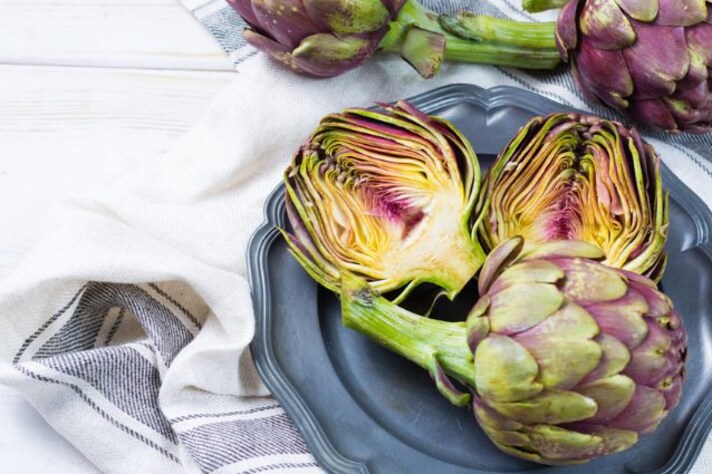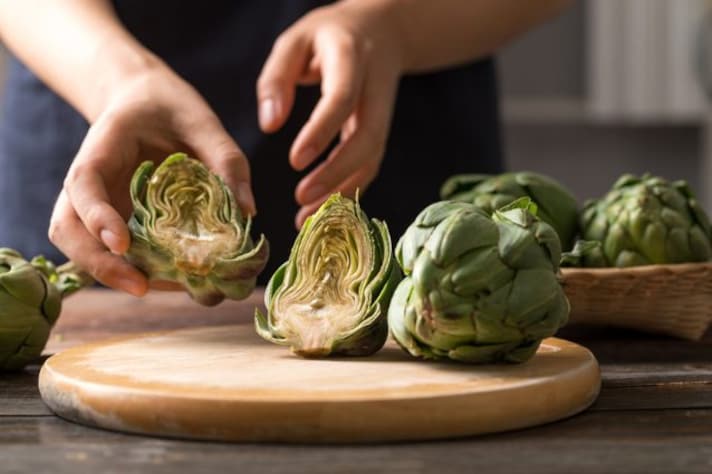Why You Should Never Let Artichokes Turn Brown
Artichokes are delicate vegetables that can lose their flavor, texture, and appearance if they turn brown. Oxidation not only makes them bitter but also toughens the leaves and dries out the heart. To keep artichokes fresh and delicious, use lemon or vinegar to prevent browning and store them carefully.

Artichokes are one of those vegetables that can seem a bit intimidating at first—so unique and intricate, with their layered petals and prickly thorns. But once you’ve cracked the code and learned how to prepare them, you’ll find they’re well worth the effort. However, there’s one common mistake many people make when handling artichokes, especially after they’ve been cut: letting them turn brown. It’s not just an aesthetic issue—it’s a mistake that affects the flavor, texture, and overall enjoyment of this wonderful vegetable. Here’s why you should avoid it at all costs.
Browning Is More Than Just a Visual Setback
Sure, you’ve probably heard the saying “you eat with your eyes first,” and in the case of artichokes, that old adage rings especially true. When artichokes brown, they lose that vibrant, fresh green color that makes them so appealing. But it’s not just a matter of looks—browning indicates oxidation, a process that occurs when the cut surfaces of the artichoke are exposed to air. This isn’t just about a slight discoloration; it’s a sign that the quality of your artichoke is starting to deteriorate.
As the artichoke turns brown, it can also start to lose some of its natural moisture. This means the vegetable becomes less tender and more fibrous, making it far less pleasant to eat. If you’ve ever bitten into a brown artichoke and been disappointed by the toughness or dryness, you know exactly what I mean.
The Bitter Truth: Oxidation and Flavor
While browning is an obvious visual cue, it’s not just your eyes that are telling you something’s gone wrong—your taste buds will catch on too. Oxidation, which causes the artichoke to turn brown, can also affect the flavor, bringing out a bitterness that wasn’t there when the vegetable was fresh and vibrant. Artichokes are naturally mild and nutty in flavor, but when they start to oxidize, they develop an off-putting sharpness that can overpower the more delicate notes you love.

If you're preparing a dish where the artichoke is a starring ingredient, you don’t want to risk having that bitterness infiltrate your meal. This is especially important in dishes where the artichoke’s flavor is central, like in a simple steamed artichoke with a buttery dip or an elegant artichoke heart salad. The bitterness could completely change the flavor profile, leaving you with a dish that’s far from the delicious experience you were hoping for.
Texture Trouble: The Brown Artichoke Effect
Texture is everything when it comes to artichokes. After all, there’s nothing quite like the satisfying way the leaves pull away from the heart, each bite offering a soft, meaty consistency. But once an artichoke turns brown, that texture starts to suffer. The once tender leaves become leathery and tough, and the heart—which should be creamy and delicate—starts to dry out.
Browning disrupts the artichoke’s natural moisture balance. As the vegetable oxidizes, the water inside the cells starts to evaporate, leaving behind a drier, less succulent product. Instead of that delightful, tender heart that melts in your mouth, you’ll end up with something that’s far more difficult to chew and much less enjoyable to eat. So, if you're hoping to make a dish that’s smooth, luscious, and melt-in-your-mouth perfect, you’ll want to avoid any browning at all costs.
The Magic of Lemon and Acid
Fortunately, preventing browning in artichokes is relatively simple—it just requires a little proactive care. The key is to stop oxidation before it starts, and the best way to do that is by using acid. The moment you cut or trim your artichoke, make sure to immediately place it in a bowl of water with a good squeeze of lemon juice. The acid in the lemon helps slow down the oxidation process, preserving both the color and the flavor of your artichoke.

If lemon isn’t your thing, you can also use vinegar or citric acid, both of which serve the same purpose in keeping your artichoke from turning brown. It’s an easy fix that will make all the difference in keeping your artichokes looking and tasting fresh until you’re ready to cook them.
Artichoke Storage: The Right Way to Keep ‘Em Fresh
If you’re not ready to cook your artichokes immediately, proper storage is key. While they do best when cooked shortly after being purchased, you can keep them fresh for a day or two with a little care. To store artichokes, wrap them in a damp paper towel and place them in a plastic bag in the refrigerator. This will help prevent them from drying out too quickly and slow down the browning process. Just make sure to check on them if they’re sitting for a while, as the clock is ticking once they’ve been cut.
While storing artichokes in water isn’t a great option long-term (it can cause the leaves to become too soggy), keeping them hydrated with a light mist of water can help retain their freshness for a little longer.
;Resize,width=767;)

;Resize,width=712;)
;Resize,width=712;)
